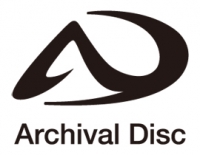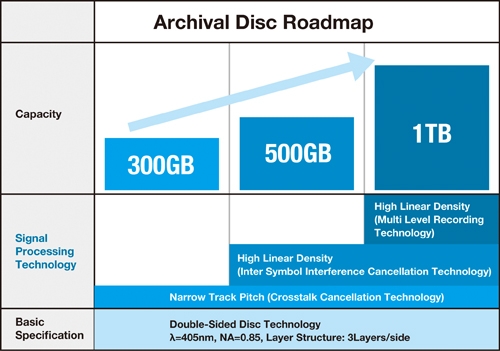Sony and Panasonic announce the Archival Disc: is it the answer to the long-term digital storage conundrum?
posted Monday, March 10, 2014 at 4:22 PM EST

In the age of digital photography, long-term storage of our collective works is a real issue. Even the amateur photographer easily amasses hundreds of gigabytes worth of data in a short time, and it's even more with professional photographers – let alone videographers. It's no wonder that RAID network storage and other multi-disk drive storage devices with multiple terabytes of capacity are in high demand, but these devices are based on the good old magnetic hard-disk which isn't really all that reliable in the long run -- especially when the amount of data that needs to be preserved continues to grow and grow. So what digital artists really need is an affordable, high-capacity and enduring archival solution.
The industry is aware of this, and back in the summer of 2013 Sony and Panasonic jointly announced the development a new optical storage medium that should be the solution to all our data archival issues. Slated for availability in 2015, the two companys have now disclosed the name of the new medium, as well as a couple of key details. It's going to be called the Archival Disc, and in order to honor its name, it will be launched with a minimum capacity of 300GB – that's three times as much as current three-layer Blu Ray XL discs can offer.
For the long term, Sony and Panasonic will increase the storage capacity of the Archival Disc up to 500GB at first, and then later up to 1TB. Once that goal is achieved, the AD (as we are certain it will be abbreviated) will be able to hold as much data as current portable 2.5" hard drives – but without all the issues that come with a mechanical device. And what's even more important than sheer capacity is the fact that the Archival Disc promises to be a durable medium that'll hold its data for a long time, thanks to the advances in optical disc manufacturing.

However, the new Archival Disc isn't the first optical disc technology on the block trying to combat the archival storage problem. Started back in 2010, the M-Disc offers both DVD and Blu-Ray storage capacities, but with longevity to protect your data for a millennium (hence, the "M" in the name). The M-Disc is basically your regular DVD or Blu Ray disc, and is compatible with all current players and drives supporting either standard. Unlike your regular optical disc, though, the M-Disc is made of "advanced metals" (according to their promotional video) that are "chemically stable and heat-resistant materials" (website). While it can be read by any DVD or Blu Ray drive or player, it can only be engraved in a compatible drive that sports a more powerful laser than regular writers.
Not only does the M-Disc promise a lifetime of up to a thousand years, it also isn't much more expensive than regular discs. Compatible DVD or Blu Ray writers cost largely the same as regular drives, and current 25GB Blu Ray M-Discs can be had for as little as $5 a piece. Now, should Millenniata, the company behind the M-Disc, and the fine folks behind the Archival Disc decide to combine forces, this could actually prove to be the solution to the long-term data storage conundrum that everyone's been looking for. It'll offer lots of space in a small and affordable package, and it'll last multiple generations. Again, this only our hopes and dreams scenario here -- we've heard no word on such a partnership unfortunately.
Whether or not the Archival M-Disc will become a reality remains to be seen. For now, we'll have to wait another year or two until the regular Archival Disc becomes available, and as it is with new technologies, there's always the chance that in the end they fail where it matters most: to be successful with consumers. The same happened to the HD-DVD, to the MiniDisc, to the Betamax tape and various other standards. As promising as the Archival Disc looks right now, there's no way of telling how successful it'll be, whether it's going to make the impact that Sony and Panasonic are hoping for, and in the end, whether the standard itself will be as durable as the discs promise to be.
(via Übergizmo)